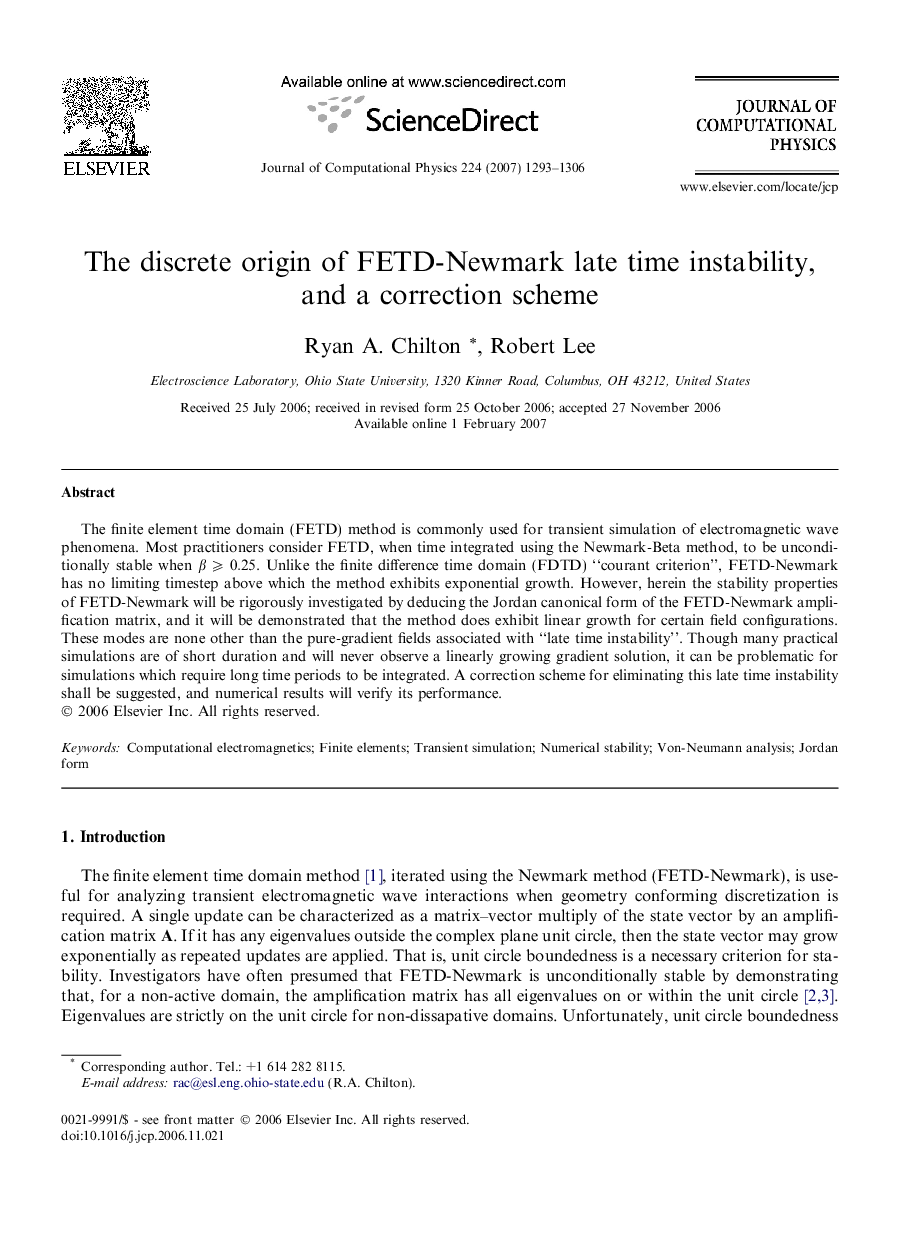| Article ID | Journal | Published Year | Pages | File Type |
|---|---|---|---|---|
| 522566 | Journal of Computational Physics | 2007 | 14 Pages |
The finite element time domain (FETD) method is commonly used for transient simulation of electromagnetic wave phenomena. Most practitioners consider FETD, when time integrated using the Newmark-Beta method, to be unconditionally stable when β⩾0.25β⩾0.25. Unlike the finite difference time domain (FDTD) “courant criterion”, FETD-Newmark has no limiting timestep above which the method exhibits exponential growth. However, herein the stability properties of FETD-Newmark will be rigorously investigated by deducing the Jordan canonical form of the FETD-Newmark amplification matrix, and it will be demonstrated that the method does exhibit linear growth for certain field configurations. These modes are none other than the pure-gradient fields associated with “late time instability”. Though many practical simulations are of short duration and will never observe a linearly growing gradient solution, it can be problematic for simulations which require long time periods to be integrated. A correction scheme for eliminating this late time instability shall be suggested, and numerical results will verify its performance.
